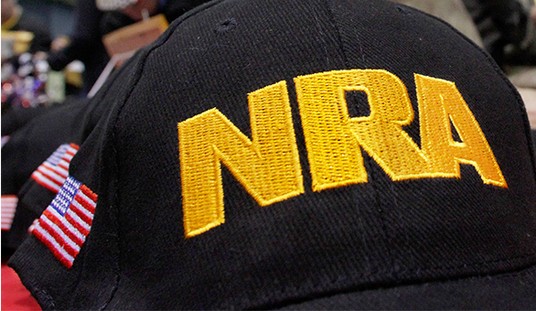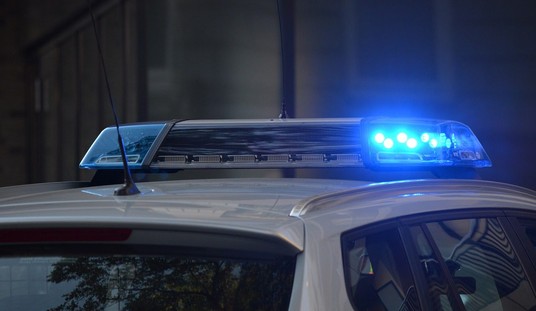The Washington Post is one of many media outlets which has opted to post copies of the evidence reviewed by the grand jury investigating the shooting death of strong-arm robbery suspect Michael Brown by Ferguson, Missouri police officer Darren Wilson.
Of particular interest to many readers will be Officer Wilson’s testimony to the grand jury, which can be found starting on page 196 of Grand Jury Transcript Volume 5.
Feel free to read the entire transcript, or all of Wilson’s testimony at your leisure.
Summary of Wilson’s testimony
After being sworn in, Wilson notes (p. 197) that he is currently on administrative leave, and is appearing voluntarily. It is worth noting that an officer waiving his Fifth Amendment rights to testify in front of a grand jury is very uncommon.
Wilson is a certified police officer in the state of Missouri and all of his training and certifications are current (p. 198). He is 6’4″, 210 lbs (the same height as Micheal Brown, but 80 lbs lighter).
Prior to his encounter with Michael Brown and Dorian Johnson, Officer Wilson’s day had been completely uneventful. He was in the area responding to a sick child call and was responding with EMS, who then transported the mother and newborn with a fever to the hospital (p. 199-202). It was while he was completing this call to in Northwoods apartments that he first heard of the strong-arm robbery call. Two other units were dispatched to handle that call. Wilson was not. (p. 202).
Wilson was dressed in a normal police uniform and was driving a marked Ferguson police SUV ( a Chevrolet Tahoe) with light bar (p. 204). Wilson’s duty equipment included a Sig 229 .40 Smith & Wesson caliber pistol with a 12 round magazine, plus one round in the chamber for a total of 13 rounds in the gun. He carried two spare magazines on his belt, along with two pairs of handcuffs, an ASP baton, chemical spray, and his portable radio. The Ferguson Police Department does not have enough Tasers for every officer, and Wilson generally does not request them because they are large, bulky and uncomfortable to carry (p. 205-206).
After completing the sick child call, Wilson is leaving when he notices that two men, one much larger than the other, are walking down the double yellow centerline of Canfield Drive, impeding traffic (p. 207).
Wilson pulls up with his window down and suggests that Johnson and Brown move out of the road and use the sidewalk. Johnson informs Officer Wilson that they are almost to their destination, and continues walking down the middle of the road. Wilson replied, “Well, what’s wrong with using the sidewalk?” to which Michael Brown replied, “F**k what you have to say.” (p. 208).
It was at this point Brown drew Officer Wilson’s full attention, and he noticed that Michael Brown had a handful of Cigarillos, and that Dorian Johnson wore a black shirt. Wilson realized that the Johnson and Wilson matched the descriptions of the two strong-arm robbery suspects that two other officers had been dispatched to find (p. 209).
The two suspects kept walking past Wilson’s car. Wilson got on his radio and informed dispatch that he needed another car, then backed up his SUV past Johnson and Brown, then angled it to impede their progress and starts to open his door, saying to Brown, “Hey, come here a minute.” Brown then said, “What the f**k are you going to do about it,” and slammed the door shut (p. 209).
Wilson then tried to open the door again and push Brown away, exclaiming, “Get the f**k back.” Brown slammed the door shut a second time, and then threw a punch at Officer Wilson, striking him in the face. Wilson described the punch as a “full on swing, but not a full shot,” (p. 210) suggesting that Michael Brown put all of his 292 pounds into an attempted knock-out punch, but that he didn’t fully connect, and only struck a glancing blow.
Under Missouri law this justifies the use of deadly force.
After striking Officer Wilson, Brown handed the Cigarillos to Dorian Johnson and Wilson attempted and failed to gain control over Brown’s right arm. He described it as fruitless as “a five year old holding on to Hulk Hogan” (p. 212).
Wilson again attempted to open his door and escape the vehicle, but Brown blocked his escape and swung another full power punch and hit Wilson in the face again.
This again justifies the use of deadly force.
Officer Wilson began to run through his options, and ruled out his chemical spray because Brown’s hands were in front of his face (rendering the spray unlikely to hit his eyes and work), and the vehicle confines would likely result in Wilson getting the spray into his eyes as well. Wilson’s ASP baton was behind his right hip and trapped against the SUV’s seat, and even if he could deploy it, there wasn’t room to deploy and swing it with any force. He couldn’t use the flashlight on the passenger seat as an impact weapon either, for the same reason. There simply wasn’t enough room to swing it (p. 213-214).
Wilson decides that his only viable option is his gun
Wilson finally decides that he has to go for his handgun, the Sig P229 in .40 Smith & Wesson.
[article continues on next page]
Wilson unholsters his pistol and shouts a warning to Brown, “Get back or I’m going to shoot you.”
Brown responds by grabbing Officer Wilson’s gun and stating, “You’re too much of a p***y to shoot me” (p.214). Brown twists the gun so that the barrel is pointed at Wilson’s body.
Yet again, this justifies the use of deadly force.
At this point, the grand jury interrupts to ask Wilson to identify his handgun in a series of photos so that they can better understand what the pistol looked like (p. 215-216). The grand jury notes at this time that Brown had struck Wilson twice in the face with full-power blows, and Wilson responds that he was worried that a third blow could render him unconscious or kill him outright (p. 216-217).
Wilson then starts to describe the struggle over control of the gun, and the grand jury redirects him to pictures showing his injuries photographed at the hospital. They include scratches to the back of his neck, considerably swelling to both his right cheek, swelling to his left cheek, and red marks (p.217-222).
After detailing his injuries, they return to the struggle over Wilson’s pistol, which Brown had turned into Wilson’s body. Wilson restates that Brown said that “You’re too much of a p***y to shoot me,” and then attempted to get his finger inside the triggerguard of the weapon to shoot officer Wilson (p.223).
This is attempted murder, and yet again justifies the use of deadly force by Officer Wilson.
Wilson is worried that Brown is going to be able to fire a shot into his leg, and shifts his body, then uses his left hand to push Brown away with all his force. This allows Wilson to move the barrel away from his leg, but Brown still has his hand on the gun.
Shots fired
Wilson attempted to pull the trigger, but the gun fails to discharge with Brown still holding on to it (p.224).
He pulled the trigger again, and it just clicked again. It is probable that the slide is out of battery during these two attempts to fire. It wasn’t until his third trigger pull that the gun went off, blasting a bullet through the door panel. Glass explodes (the window was down and in the door panel) and Wilson saw blood. At this point both men are startled. Brown takes a step back, gets a look on his face “like a demon” and comes back at Wilson through the SUV’s window again.
Once again, this justifies the use of deadly force.
Brown hits Wilson again, and Wilson attempts to fire again, and his gun goes “click” instead of “bang.” He does a “tap-tack-bang,” drill throws his left hand up to protect his face, and fires again. This time the gun fired again (p.225).
Because of the struggle over the gun pushing it out of battery, it went click, click, boom, click, boom, in the five attempts to fire in the SUV, with only two successful shots fired.
By this time, Dorian Johnson has taken off. A witness claimed he sprinted away at the first gun shot, and that he never turned as he ran. All his testimony that was the root of the initial riots in August is believed to have been entirely fabricated.
Michael Brown then starts to run. Wilson calls for backup and says shots were fired over the radio. He then starts running after Brown (p.226).
Chase and confrontation
Wilson chases Brown, Brown stops. Wilson stops. Brown turns.
Wilson yells for Brown to get on the ground. Instead, Brown grunts and does a stutter step, to start running back at Wilson (p.227). Brown’s left hand is in a fist. His right hand goes under his shirt, towards his waistband. Wilson tells Brown to get on the ground again,then fires a series of shots (p.228). Wilson is focused on Brown’s hands. This likely explains the hits to Brown’s arms (you tend to shoot where you look). Wilson knows that he missed some shots but knows at least one connected because he sees Brown flinch.
Brown keeps coming.
[article continues on next page]
Wilson describes having tunnel vision focused on Brown’s right hand (p.228) as his fires that volley of shots. After the final shot, his vision opens up again. Brown is still coming, and hasn’t slowed down. Wilson screams for Brown to get on the ground again, but he just keeps coming. Wilson is backpedaling to keep some distance between them. Brown just looks angry that hes been shot, and continues to charge.
Brown is just 8-10 feet away and Wilson thinks that an enraged Brown will kill him if he reaches him. Wilson adjusts his point of aim and concentrates on the sights, aimed at Brown’s head (p.229).
After the final shot, the anger on Brown’s face went slack, “the aggression was gone,” and Brown fell face forward to the ground.
It was then that Wilson got on the radio and called for a supervisor and “every car you got” (p.230).
The shooting was over. the fallout was just beginning.
A “good shoot”
The forensic evidence collected at the scene includes blood droplet spatter that suggests Michael Brown did in fact turn and then advance upon Officer Wilson.
Evidence collected inside the car, on Wilson’s gun, from his uniform, and from Michael Brown’s body in three separate autopsies are consistent with the claim that Brown was shot in the hand in the struggle over the weapon.
Multiple eyewitnesses confirmed the physical evidence that Michael Brown was advancing upon Officer Wilson when he was shot and killed.
While there may not be such thing as a “textbook” shooting, every single shot fired by Officer Wilson, from the first attempt inside the Tahoe until the final shot into the apex of a charging Brown’s head, was entirely justified as a matter of self-defense.








Join the conversation as a VIP Member